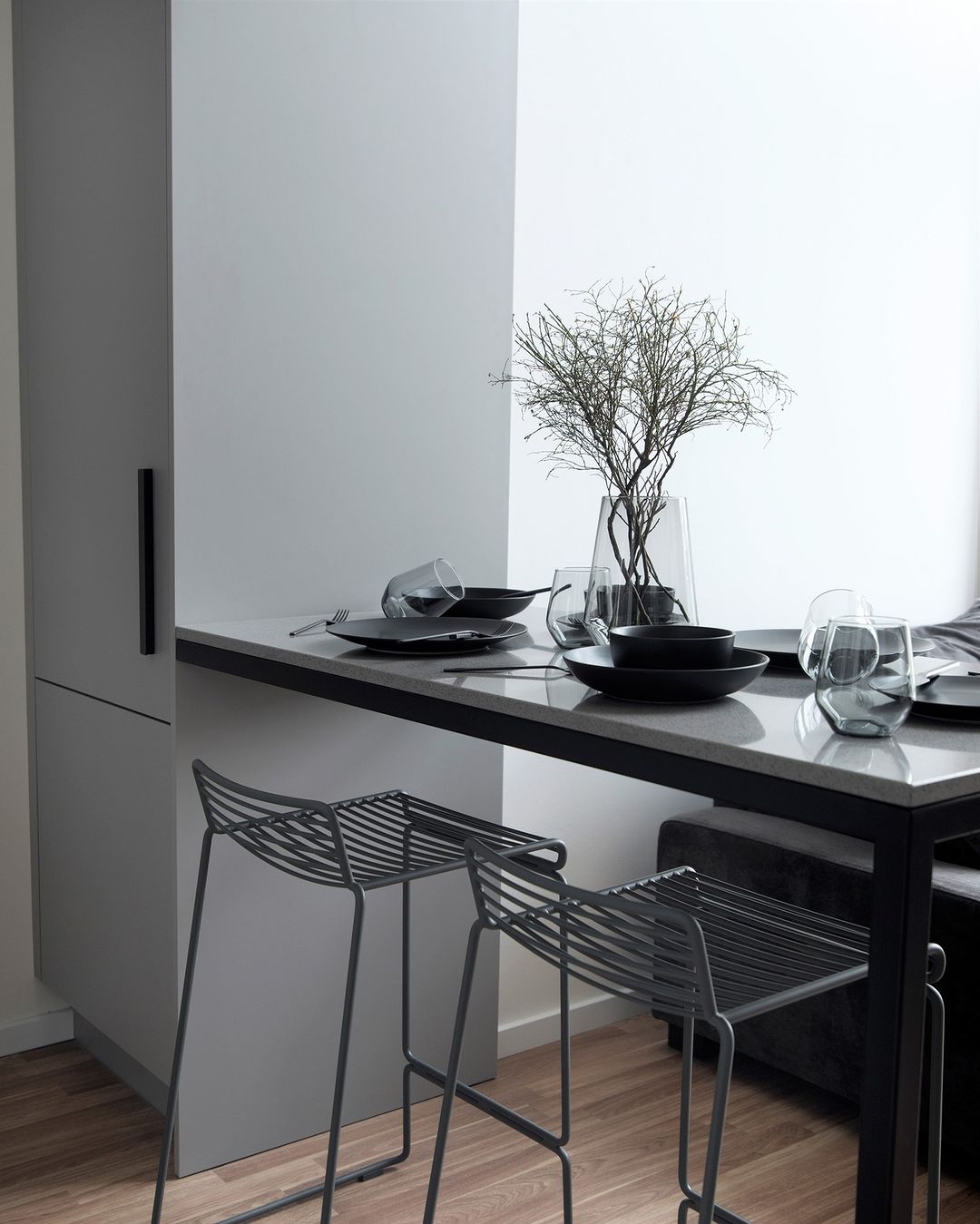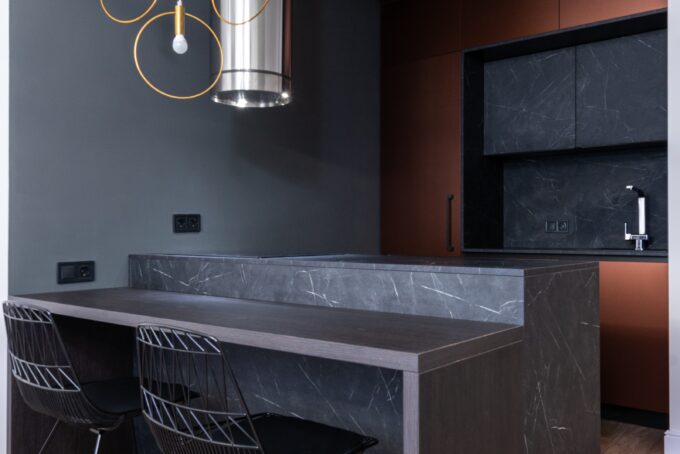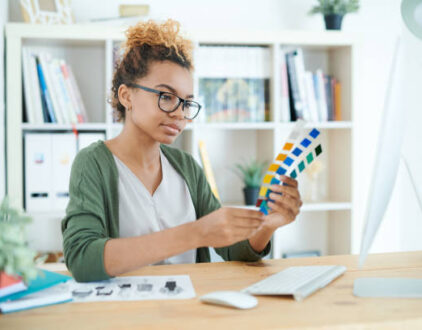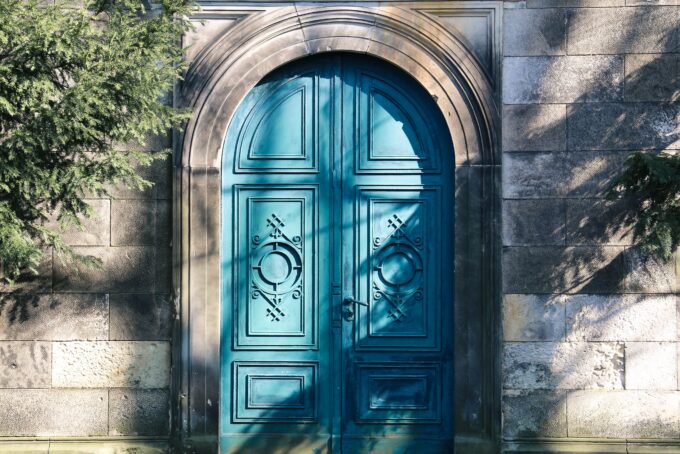In the great big world of interior design where trends come and go, having a monochromatic space is always in style. Derived from the Greek words “mono,” meaning one, and “chroma,” meaning color, the term “monochrome” refers to a design that uses only one color or varying shades of a single hue. This aesthetic approach is super popular in the design space. And when applied correctly, can be a unique and meaningful way to create cohesive, eye-catching spaces.

What is monochrome?
From accent decor to shelving displays, the monochromatic trend is taking the interior design industry by storm. But what exactly is monochrome and how did it evolve into a staple in modern interiors? To learn more about monochrome and how to use it in your design style, take a look at this quick guide below.
Historical Roots
People have been using monochrome for a long time, dating back to the classical art period. During this time, painters used a single color to create stunning designs.
From 1350 to 1620 AD, artists such as Leonardo da Vinci and Michelangelo tried their hand at monochrome, using powerful techniques to highlight the power of tonal variations. Eventually, this popular approach to artistry would make its way into other creative industries, particularly interior design.

Understanding Monochrome in Interior Design
Monochrome in interior design involves strategically using a single color or a variation of shades within the same color family. This technique makes way for a more balanced aesthetic that simultaneously encourages creativity. To create a successful monochromatic space, you have to play with a few critical elements — light, texture, and pattern — to add depth and character to your home.
Impactful Spaces
What makes using monochrome in interior design convenient is that it exudes sophistication and simplicity at the same time. When you decorate using a single color or shades within the same family, you have a more cohesive, unified aesthetic that makes for the perfect minimalistic interior. Despite their appearance, monochrome interiors are very versatile, providing a blank canvas that can adapt to varying design styles, from minimalistic to luxury.

Playing with Tones and Textures
If you think monochromatic designs are bland, boring, or lack diversity, think again. The monochrome trend encourages people to take a deep dive into the various tones and textures within a single color.
Take a monochromatic blue living room, for instance. Sure, the entire room is blue, but within that space, you might find a navy blue sofa paired with pale blue throw pillows, a textured, blue rug, and metallic accents. When you play nice with tones and textures, it helps add additional layers to the design, making the space appear more dynamic.
Color Psychology in Monochrome
Beyond aesthetics, monochrome design incorporates quite a bit of color psychology. According to color psychology, certain colors evoke certain moods. For example, the colors blue and green tend to be more calming, which is why they work especially well in the bedroom. On the other hand, yellow is a bright color that exudes energy and warmth, making it ideal for spaces like the kitchen or dining room where people typically congregate.

Practical Considerations
While the appeal of having a monochromatic space is undeniable, incorporating it into your design aesthetic requires careful planning. Lighting, for example, plays a pivotal role in such spaces. The type of lighting you pick can either enhance or reduce the significant impact that having a monochromatic space can provide.
Additionally, how you decide to arrange contrasting elements — i.e. artwork or accent furniture —can either add variety or cause your space to appear repetitive and uninspired. To avoid this, be sure to use multiple textures, patterns, and decor pieces to create visual interest. Otherwise, you could be left with a monochromatic interior that falls flat.
popular posts
- 1It’s Black Business Month, So Let’s Go Shopping and #BuyBlack!
- 2These Home Decor Items Will Instantly Make Your Space Look Outdated
- 3Black-Owned Home Decor Stores To Support Across the United States
- 4A Look Inside Elon Musk's Tiny $50,000 House
- 57 Black and Multicultural Designers To Follow For Design Inspo

Indulge in These Mini Luxury Items to Beautify Your Home
by Erika Hardison | March 13, 2023

7 Ways To Determine if Maximalism is Right for You
by Brittni Williams | March 26, 2023
Spaces
Whether it’s luxury or ease, every area of your home should be as fabulous and unique as you.

Here's the Best Color Schemes for Kitchens with Dark Cabinets
by Karina Young | June 10, 2023
FOLLOW ALONG ON INSTAGRAM
#homeandtexture
Find us on social for more home inspiration where culture, personal style, and sophisticated shopping intersect to help you create a home where you love to live.





